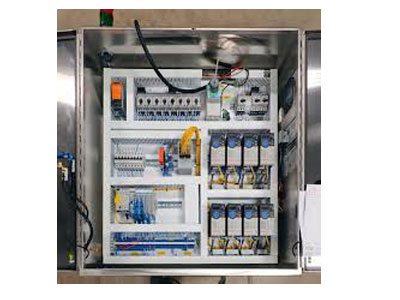What Is The Main Function Of An HMI Control Panel?
Key Takeaway
The main function of a Human Machine Interface (HMI) control panel is to provide an intuitive and user-friendly interface for operators to monitor and control machines and systems. HMIs are widely used in industries such as manufacturing, oil and gas, and water/wastewater management.
HMIs serve various purposes, including data visualization, which displays information through graphs, charts, or dashboards for clear understanding. They enable control and operation, allowing operators to start and stop processes, adjust settings, and execute other functions. HMIs also facilitate configuration and programming of automated systems. Additionally, they play a crucial role in diagnosing issues and aiding in maintenance by identifying faults and errors. Real-time monitoring capabilities help operators make timely decisions and anticipate potential issues. Being software-based, HMIs replace physical controls with digital interfaces, making them adaptable and easy to update.
Interface Between Operators and Machines
One of the main functions of HMI control panels is serving as the interface between operators and machines. This interface is crucial for ensuring smooth and effective communication between the two. By displaying real-time machine data, such as performance metrics and status indicators, operators can quickly assess the condition of the equipment. Interactive screens allow users to input commands, adjust settings, and respond to system alerts without needing to physically access the machinery.
This user-machine interaction enhances control, reduces operational risks, and helps operators monitor multiple processes simultaneously. The intuitive design and layout of HMI panels streamline these interactions, making complex machine control more manageable and user-friendly.

Real-Time Monitoring and Data Visualization
Real-time monitoring and data visualization are fundamental aspects of HMI control panels. They provide operators with instant feedback on system performance and alert them to any potential issues. This live data visualization can include information such as temperature readings, pressure levels, motor speed, and system alarms. By viewing this information on a single screen, operators can identify patterns, detect anomalies, and make data-driven decisions that prevent machine malfunctions or production delays.
The ability to present data visually, whether through graphs, charts, or numeric displays, significantly improves the way operators interact with and understand complex data. This accessibility not only helps in quick troubleshooting but also supports proactive maintenance strategies, ensuring that equipment operates at peak efficiency.
Streamlining Industrial Processes
HMI control panels play an essential role in streamlining industrial processes by automating and simplifying system management. With customized controls, operators can initiate, pause, or adjust industrial processes with a few taps or clicks. This automation reduces the need for manual intervention, leading to faster production times and more consistent output. Additionally, the seamless integration of HMIs with other automation systems, such as PLCs (Programmable Logic Controllers), enhances overall system coordination.
By centralizing control in one interface, HMIs eliminate the need for multiple separate control panels, reducing clutter and minimizing operator errors. The result is a more efficient workflow that allows operators to focus on higher-level tasks while the system manages routine operations.
Enhancing Operational Safety and Accuracy
Safety and accuracy are critical considerations in any industrial setting, and HMI control panels contribute significantly to both. Through real-time alerts and system status updates, operators are immediately informed of any irregularities, enabling quick responses to potential hazards. Some HMI systems are equipped with built-in safety protocols that lock out certain functions or trigger emergency stop commands when needed.
Accurate data representation is another way HMI panels ensure safety. By providing clear, real-time information about machine conditions, HMIs help prevent errors that could lead to accidents or equipment damage. Moreover, customizable settings allow operators to set alarms and thresholds for critical parameters, ensuring that processes remain within safe operating limits.
Customizable Controls for Diverse Applications
Customizable controls are a significant benefit of HMI control panels, making them versatile tools for various applications. These panels can be tailored to meet the unique needs of different industries and specific tasks. For example, an HMI panel used in a water treatment plant will display different controls and information compared to one used in a manufacturing assembly line. Customizability extends to user interfaces, where operators can choose which data points are most relevant for their specific role, thereby improving operational efficiency.
Whether it’s setting up complex workflows, choosing between manual and automated operation modes, or integrating with other software solutions, the adaptability of HMI panels ensures they remain effective in diverse industrial settings. This flexibility not only supports productivity but also enhances the ability to scale operations as businesses grow.
Conclusion
The main function of an HMI control panel is to facilitate effective human-machine interaction. By enabling real-time monitoring, streamlining processes, enhancing safety, and providing customizable controls, HMI panels play an indispensable role in modern industrial systems. Their ability to present data visually and integrate with various automation technologies ensures they are a cornerstone of efficient and safe operations. As industries continue to evolve, the importance of HMI panels in optimizing performance and simplifying user interaction will only grow.

